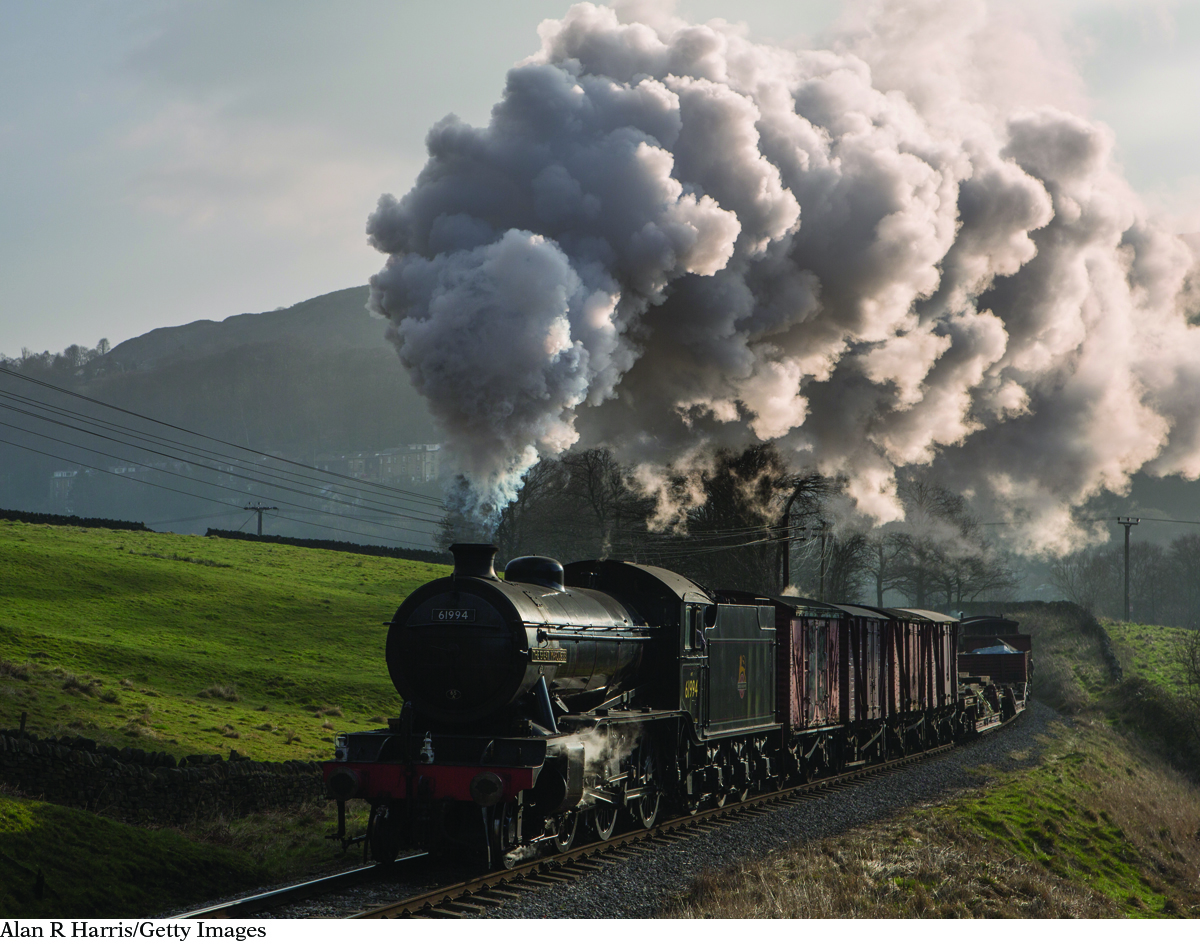Printed Page 528
Chapter 20 Introduction

Early trains were powered by steam engines. A steam engine burns coal or wood to boil water, then uses the pressure from the water vapor to drive the engine. Modern trains run on diesel or electricity instead.
Alan R Harris/Getty Images
CHAPTER 20
Understanding Energy
In this chapter, you will study
bond energies and heat of reaction
reversing chemical reactions
rates of chemical reactions
how energy is converted to work
When chemical change occurs, new substances with new properties are produced. This means some chemical bonds must break and new chemical bonds must form. The energy transferred during chemical change is related to bond making and bond breaking. People have figured out how to make productive use of the energy that accompanies chemical changes. Chapter 20 of Unit 5: Fire focuses on the source of energy in chemical change. It also explores how easily or how quickly a reaction might happen.